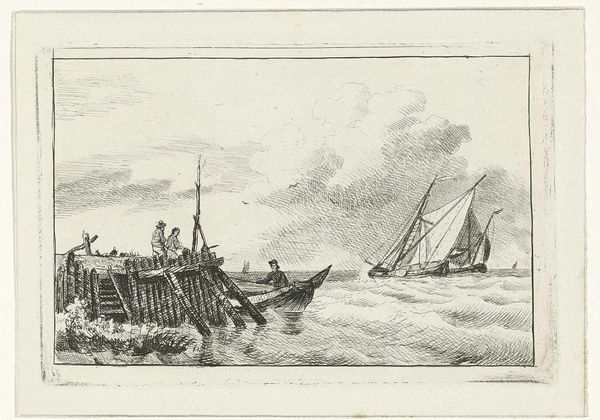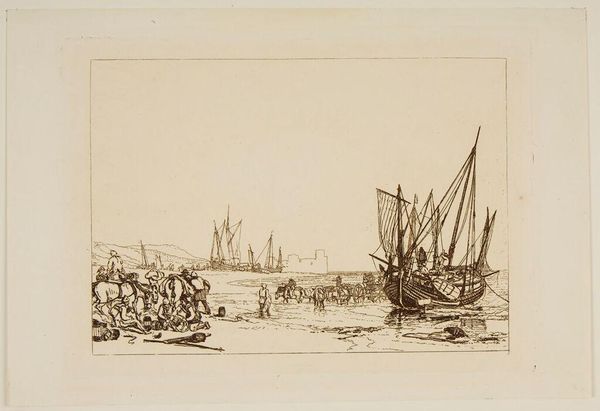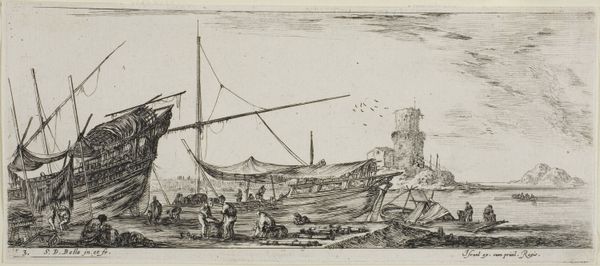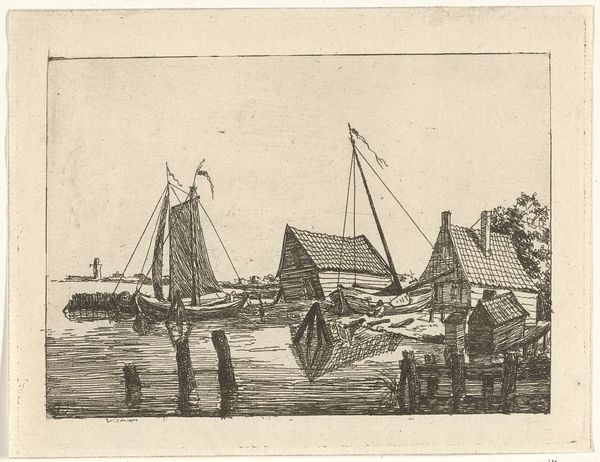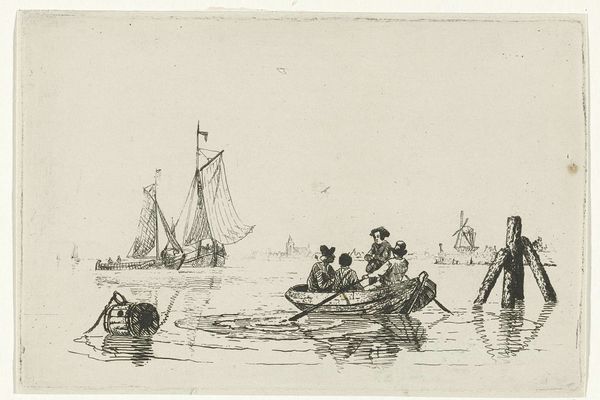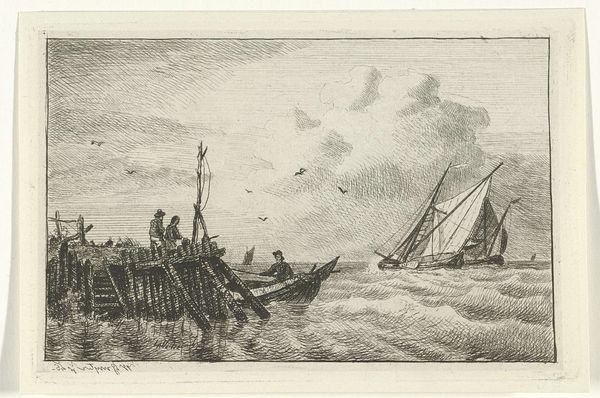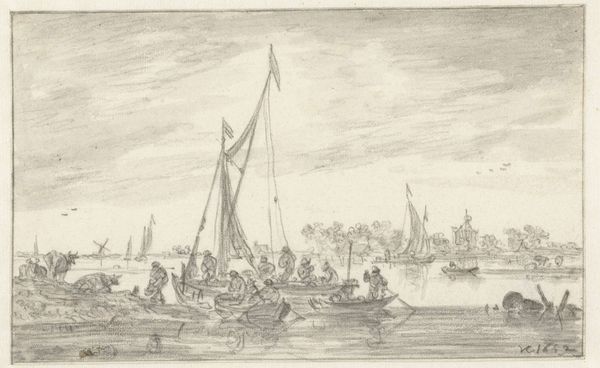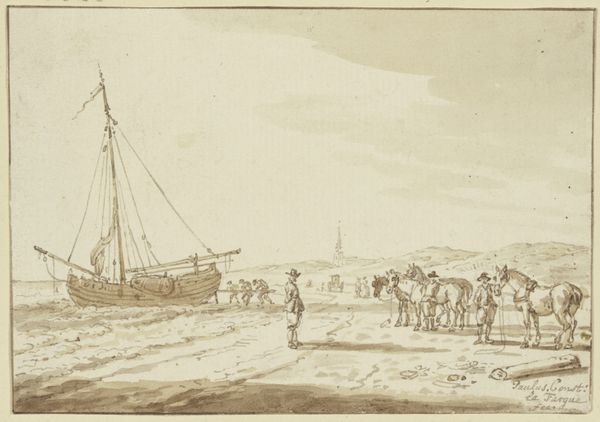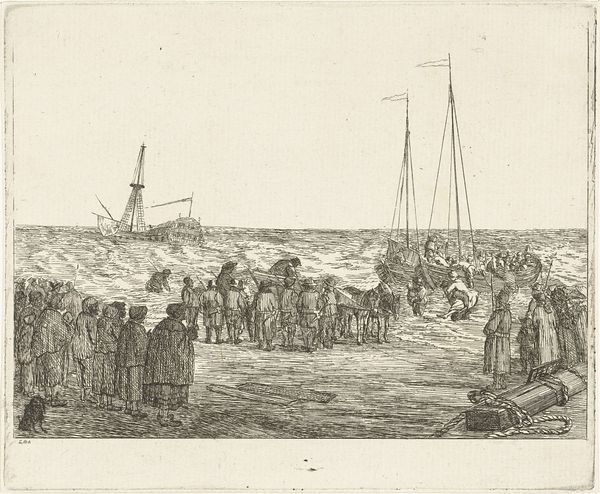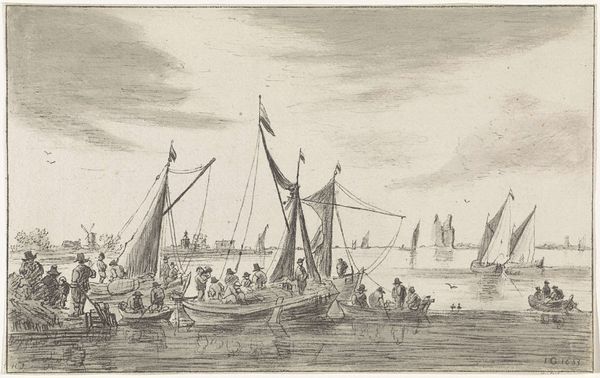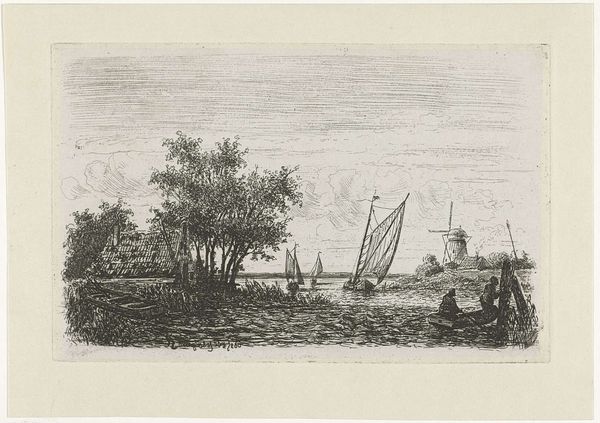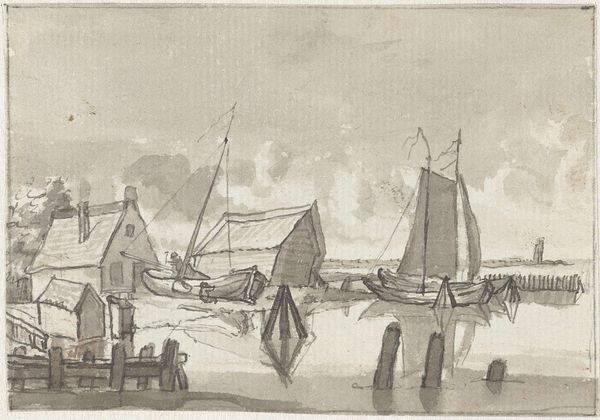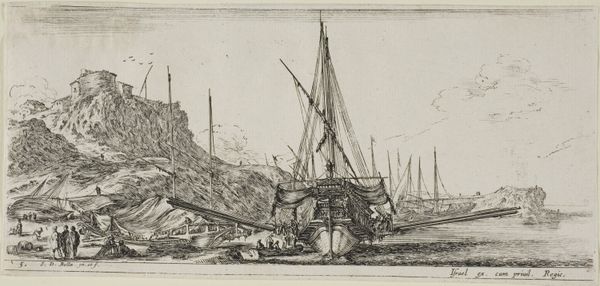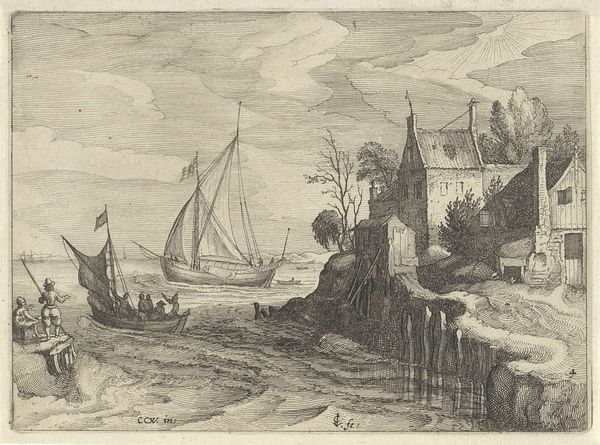
drawing, paper, ink
#
drawing
#
landscape
#
paper
#
ink
#
genre-painting
#
realism
Dimensions: height 101 mm, width 162 mm
Copyright: Rijks Museum: Open Domain
Curator: The image before us is entitled "Trekpaarden bij vissersboten," or "Horses pulling fishing boats," created in 1857 by Joseph Hartogensis. This ink drawing on paper currently resides in the Rijksmuseum's collection. What is your initial reaction? Editor: There’s an almost relentless energy to this piece. The repetitive lines illustrating the horses and waves create a visual rhythm that’s quite compelling. The ink strokes, while minimal, effectively convey movement and effort. It is a snapshot of laborious human and animal collaboration, seemingly captured on site. Curator: Indeed. The image evokes the realities of 19th-century Dutch coastal life. The central focus rests upon the cultural practice of using horses to pull fishing boats ashore. A method that underscores a vital relationship between humans, animals and the sea in that period. The overall scene is rich in detail that speaks to a specific time and place. Editor: Precisely, Hartogensis doesn’t shy away from depicting the raw reality. This realistic rendering gives it an air of documentary photography before the medium's wide embrace by cultural documentarians. The repetition of the horse motif might represent the continuity and necessity of labor embedded in coastal communities. Note the scattered figures. Curator: Considering these horses as symbols, they represent more than just physical strength. For the culture of that period, horses probably also represented reliability and perhaps a kind of partnership within these tough fishing economies. Their inclusion illustrates that people have long interacted with, and relied upon, animals to achieve certain collective goals, or at the very least survive, right? Editor: I think you’re right, which might bring me to consider the social and economic implications of these fishing activities at that particular time. We're talking about people depending on these trekpaarden for a considerable livelihood, one directly at risk to natural elements beyond control. These images become potent markers of resilience in the face of socio-economic adversity. Curator: Thank you for sharing this Historian point of view with us, I now better perceive the artwork's socio-economic significance, which highlights the dependence on traditional methods and resources, emphasizing a human relationship with both labor and the animals assisting. Editor: It was a pleasure. Hartogensis' choice of such raw illustrative tools has enabled me to interpret the deep intersection between community structure and socio-cultural practice embedded within Scheveningen society, for that time.
Comments
No comments
Be the first to comment and join the conversation on the ultimate creative platform.
